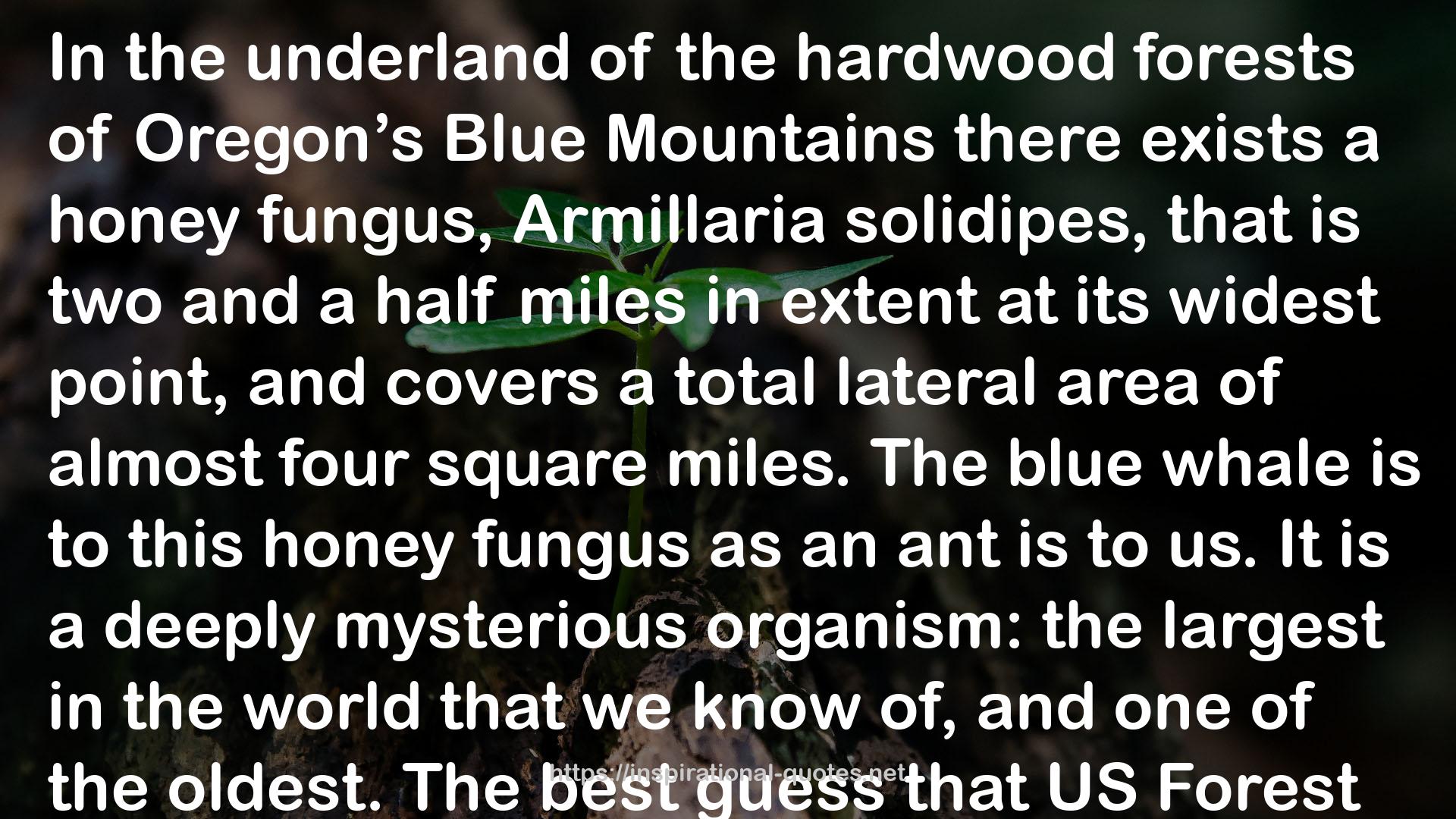" In the underland of the hardwood forests of Oregon’s Blue Mountains there exists a honey fungus, Armillaria solidipes, that is two and a half miles in extent at its widest point, and covers a total lateral area of almost four square miles. The blue whale is to this honey fungus as an ant is to us. It is a deeply mysterious organism: the largest in the world that we know of, and one of the oldest. The best guess that US Forest Service scientists have been able to offer for the honey fungus’s age is between 1,900 and 8,650 years old. The fungus expresses itself above ground as mushrooms with white-flecked stems rising to tawny, gill-frilled cups. Below ground, where its true extent lies, Armillaria solidipes moves as rhizomorphs resembling black bootlaces, out of which reach the hyphal fingers of its mycelium, spreading in search both of new hosts which they might kill, and the mycelia of other parts of the colony with which they might fuse. "
― Robert Macfarlane , Underland: A Deep Time Journey
